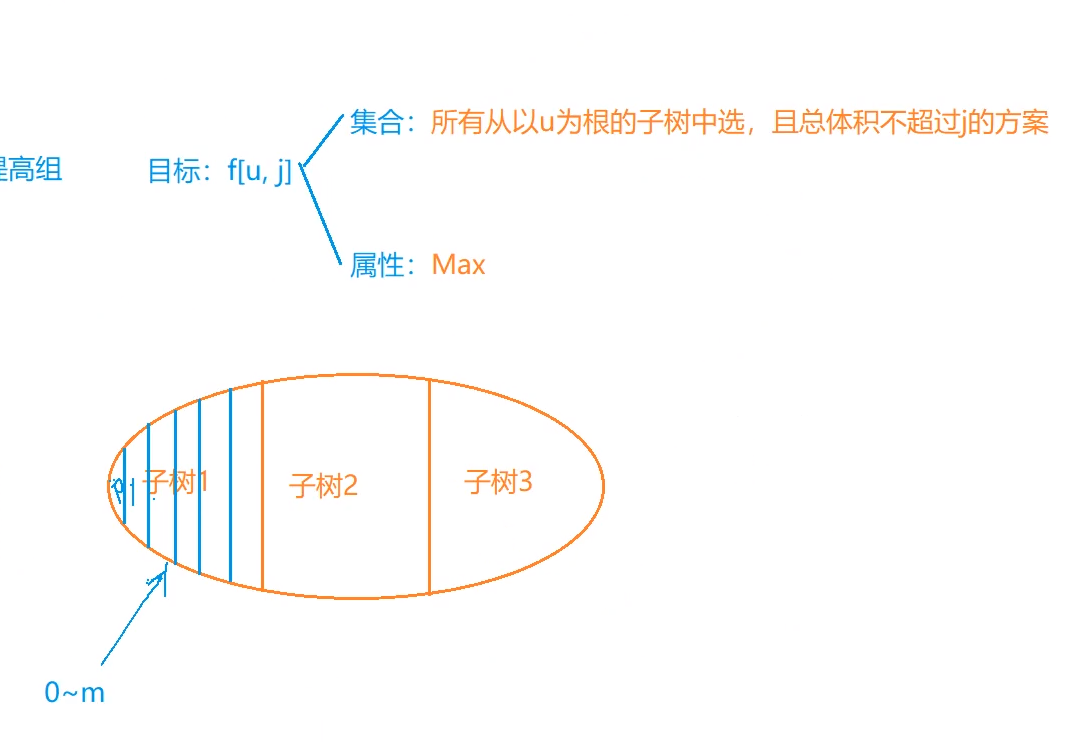
import java.util.*;
public class Main {
static final int N = 110;
static int[][] f = new int[N][N];
static int[] h = new int[N], e = new int[N], ne = new int[N];
static int[] v = new int[N], w = new int[N];
static int n, m, idx = 0;
public static void main(String[] args) {
Scanner sc = new Scanner(System.in);
n = sc.nextInt();
m = sc.nextInt();
Arrays.fill(h, -1);
int root = -1;
for (int i = 1; i <= n; i++) {
int a = sc.nextInt(), b = sc.nextInt(), father = sc.nextInt();
v[i] = a;
w[i] = b;
//i的父节点是father
if (father != -1) add(father, i);
else root = i;
}
dfs(root);
System.out.println(f[root][m]);
}
//f[i][j]表示以i为根的节点的花费j的最大价值
static void dfs(int u) {
for (int i = h[u]; i != -1; i = ne[i]) {
int son = e[i];
dfs(son);
//枚举所有要被更新的状态,子树的总体积为j = m - v[u]最后再选择(树根是必选的)
for (int j = m - v[u]; j >= 0; j--)
/*
这个时候当前结点我们看成是分组背包中的一个组,
子节点的每一种选择我们都看作是组内一种物品
*/
for (int k = 0; k <= j; k++)//遍历子节点的在体积j的组合(递推)
f[u][j] = Math.max(f[u][j], f[u][j - k] + f[son][k]);
}
//最后选上第u件物品
for (int j = m; j >= v[u]; j--) f[u][j] = f[u][j - v[u]] + w[u];
//体积不足v[u]就选不上树根那么下面的子树就也不用选择了
for (int j = 0; j < v[u]; j++) f[u][j] = 0;
}
//a向b连边
static void add(int a, int b) {
e[idx] = b;
ne[idx] = h[a];
h[a] = idx++;
}
}

